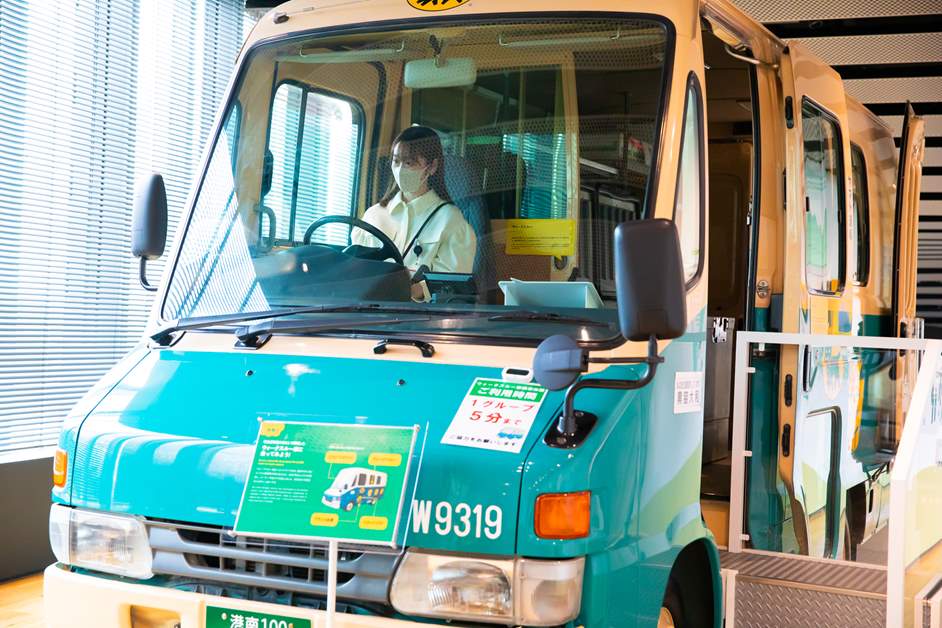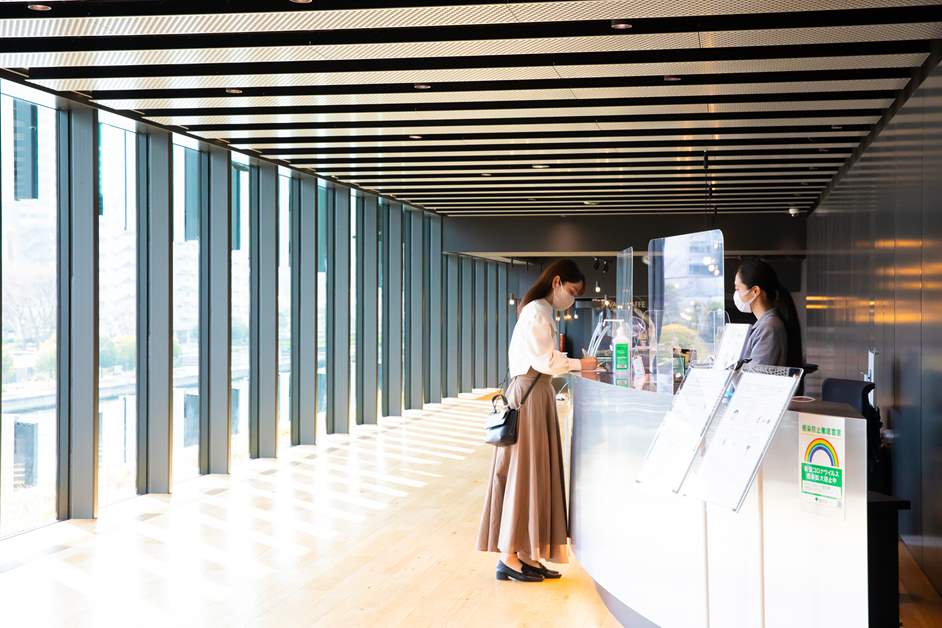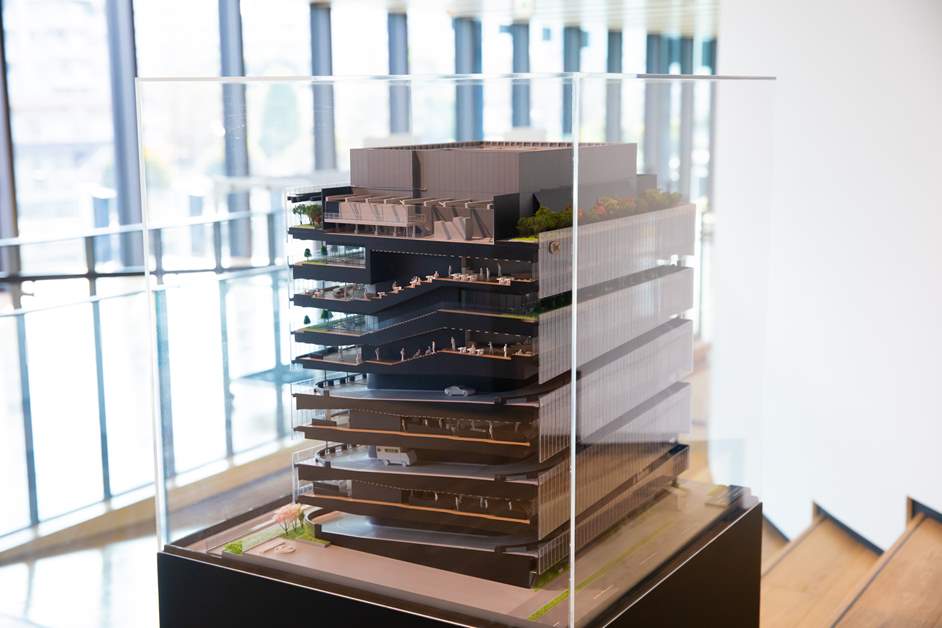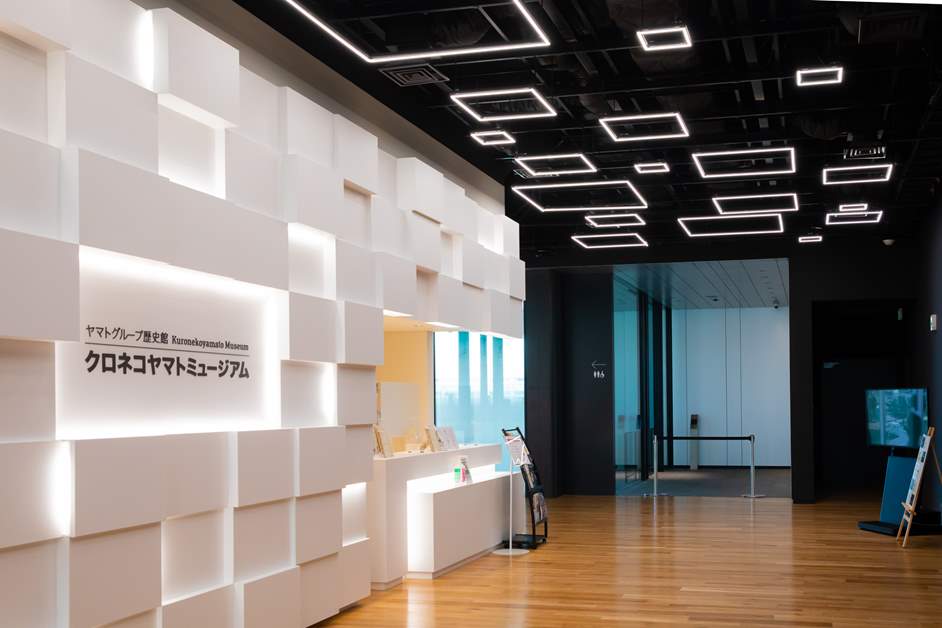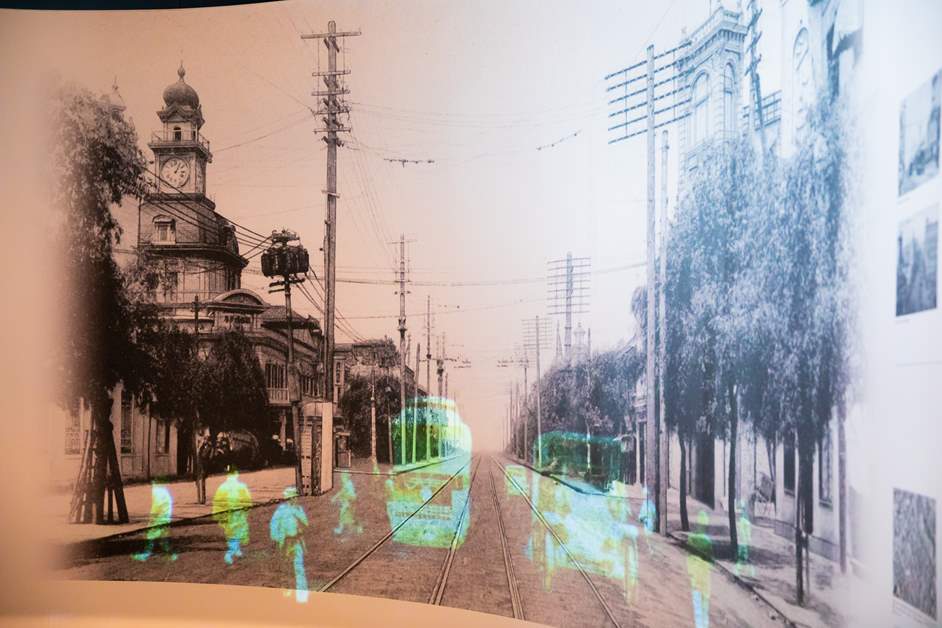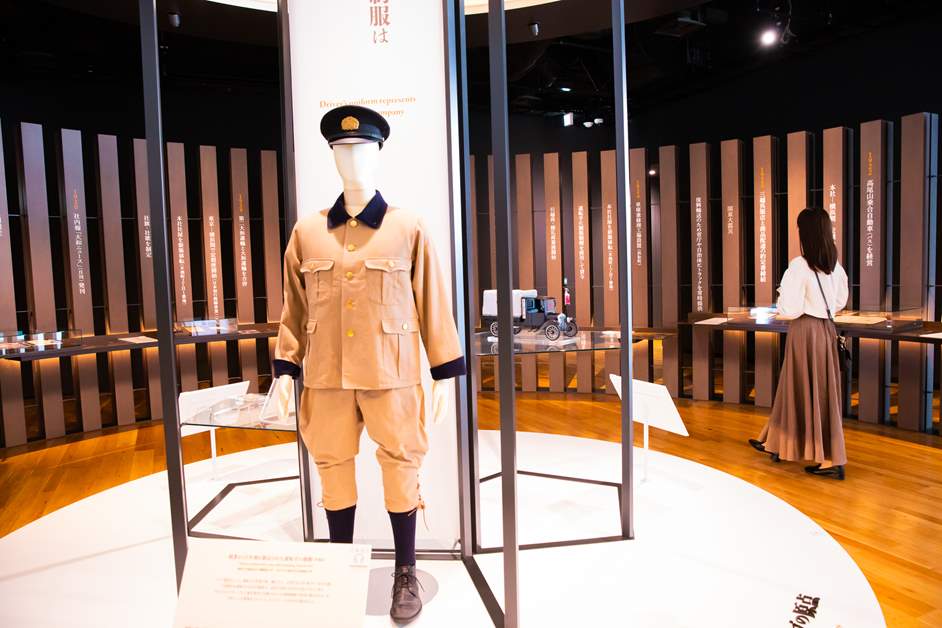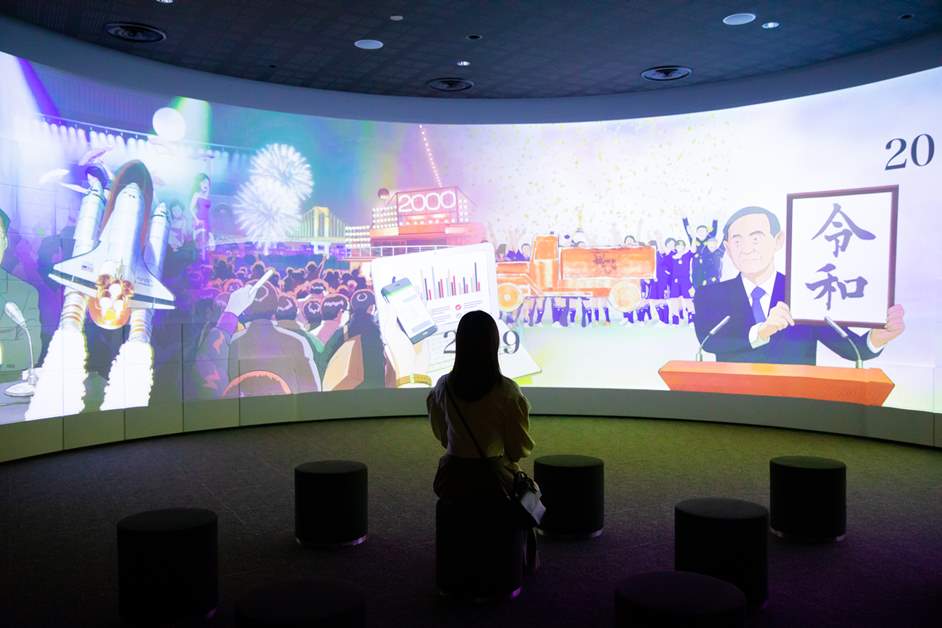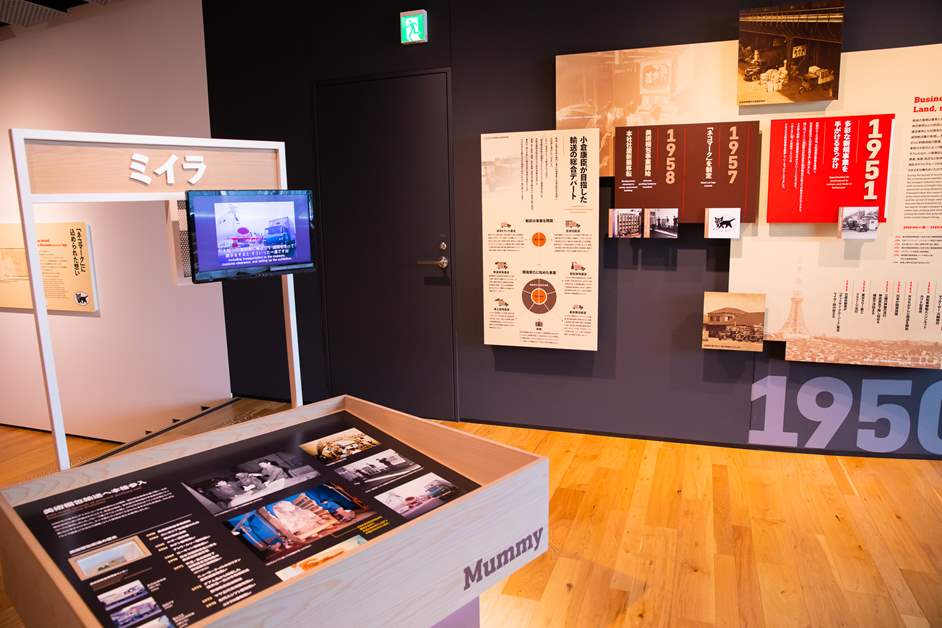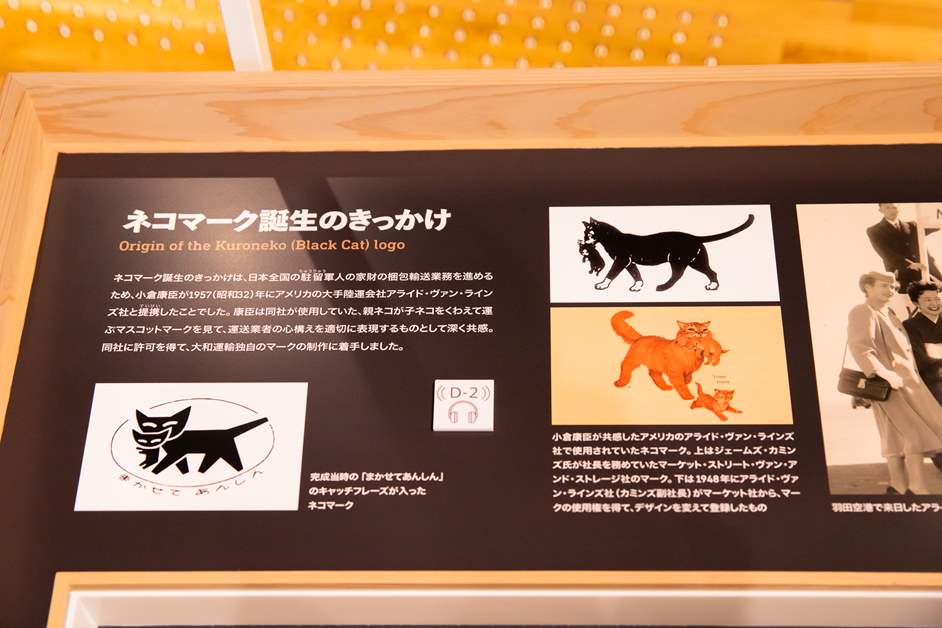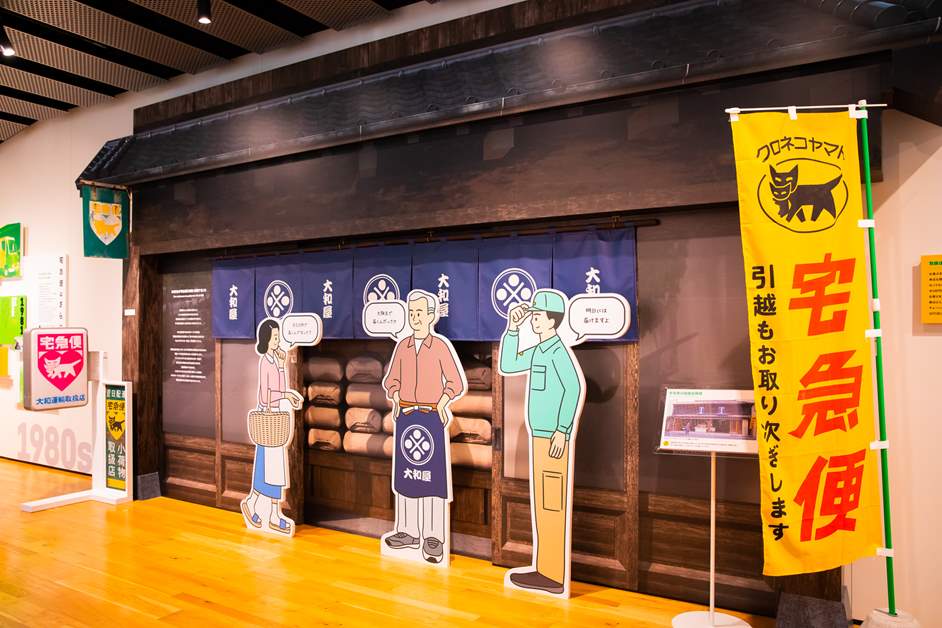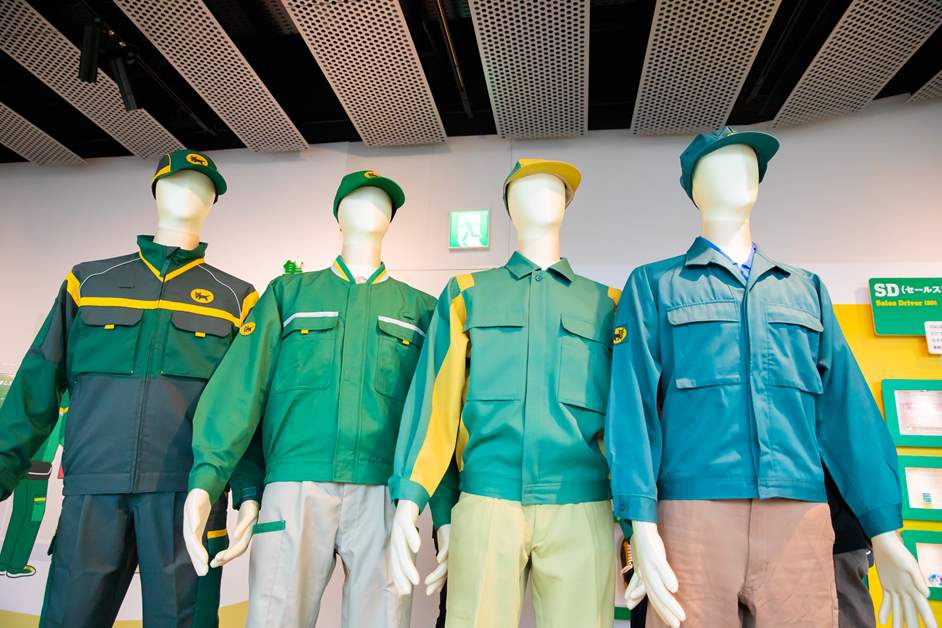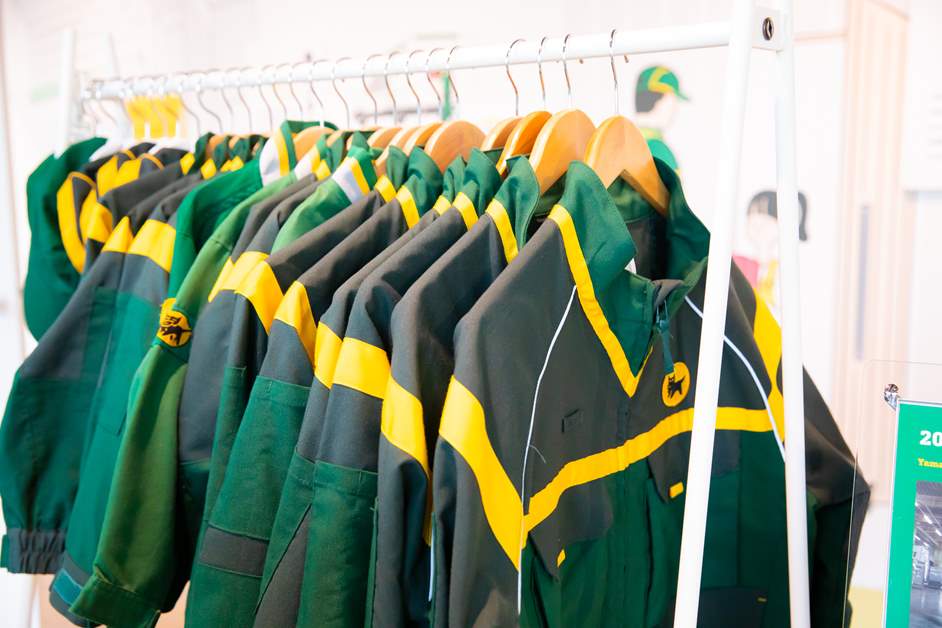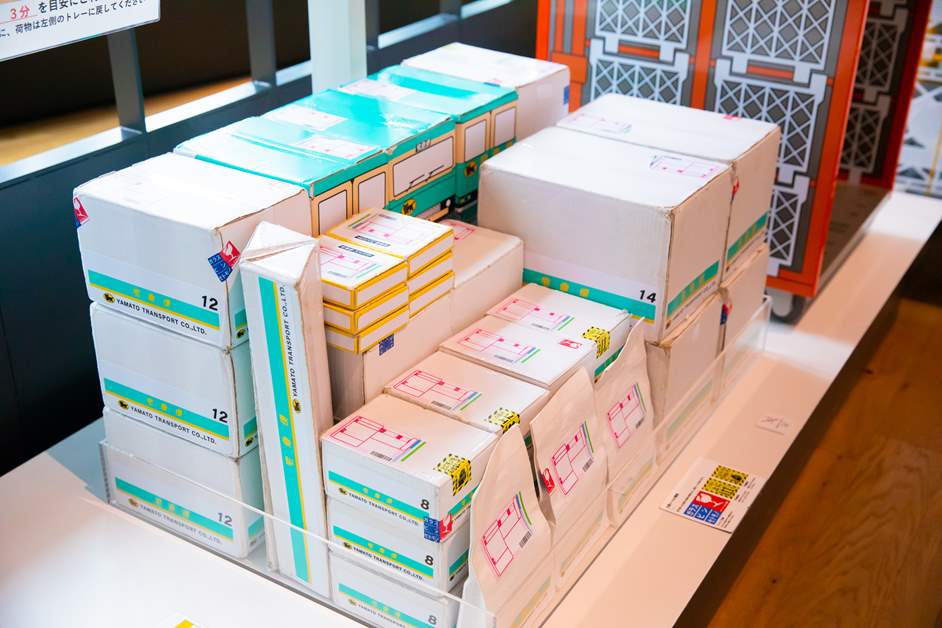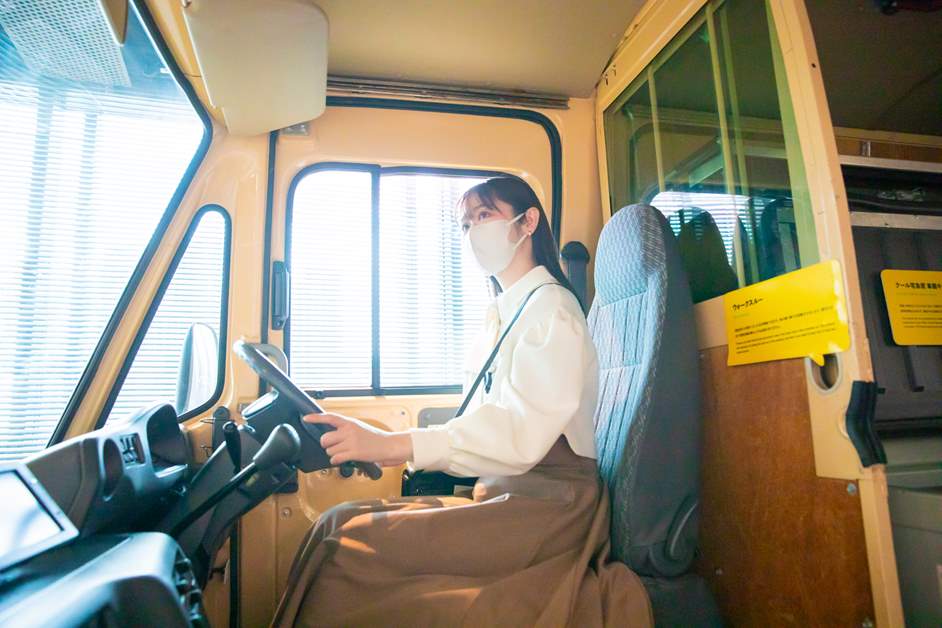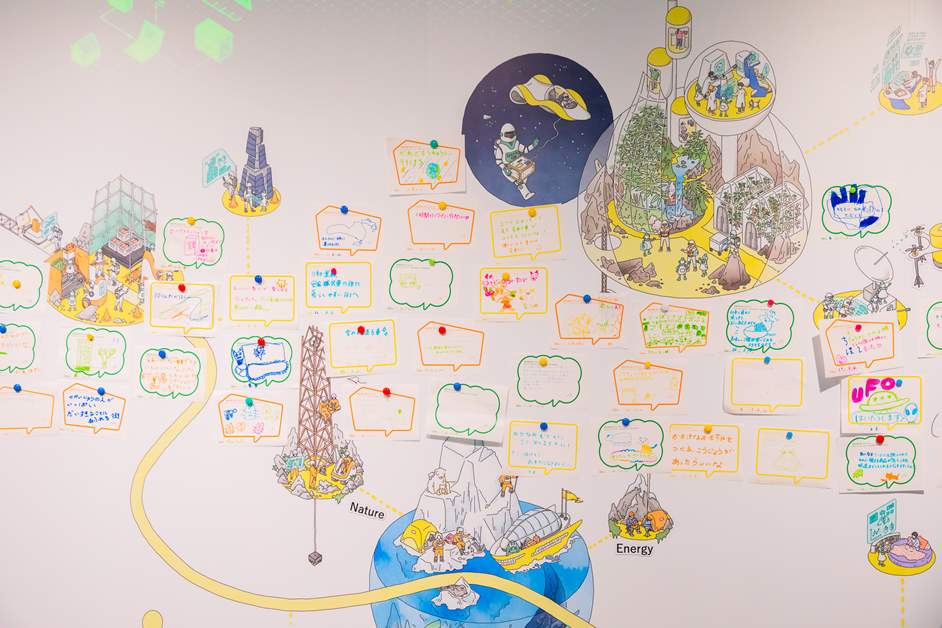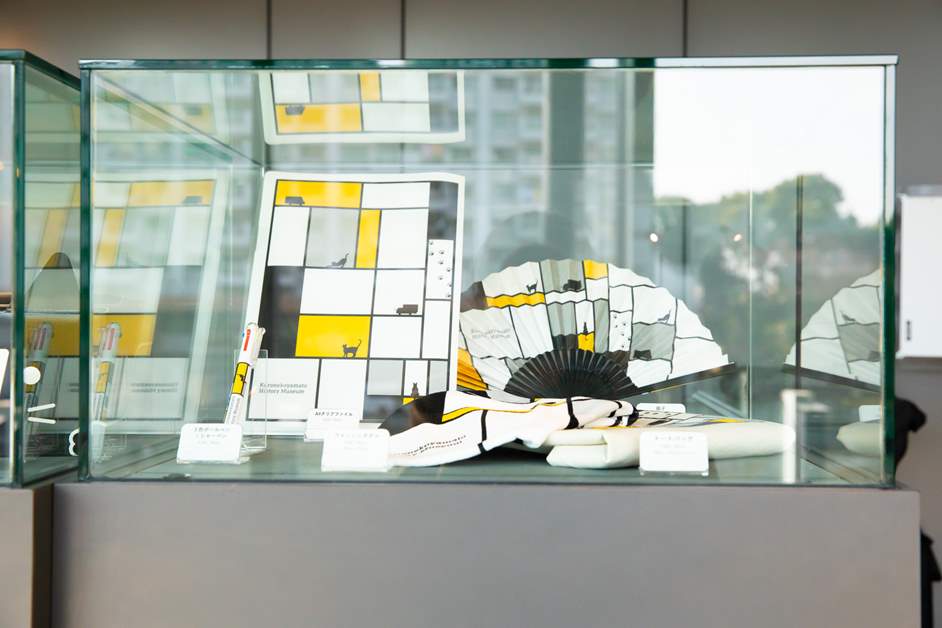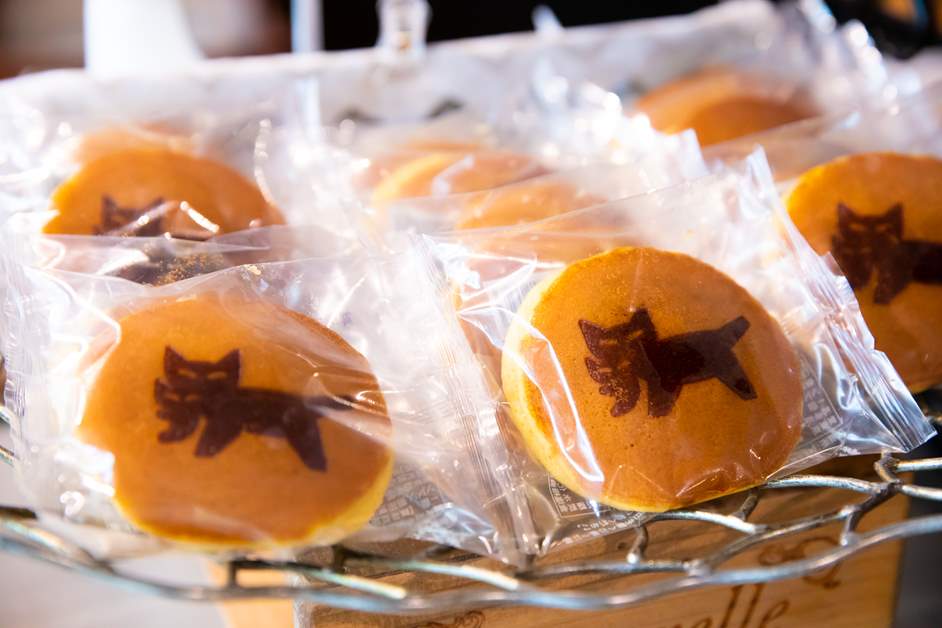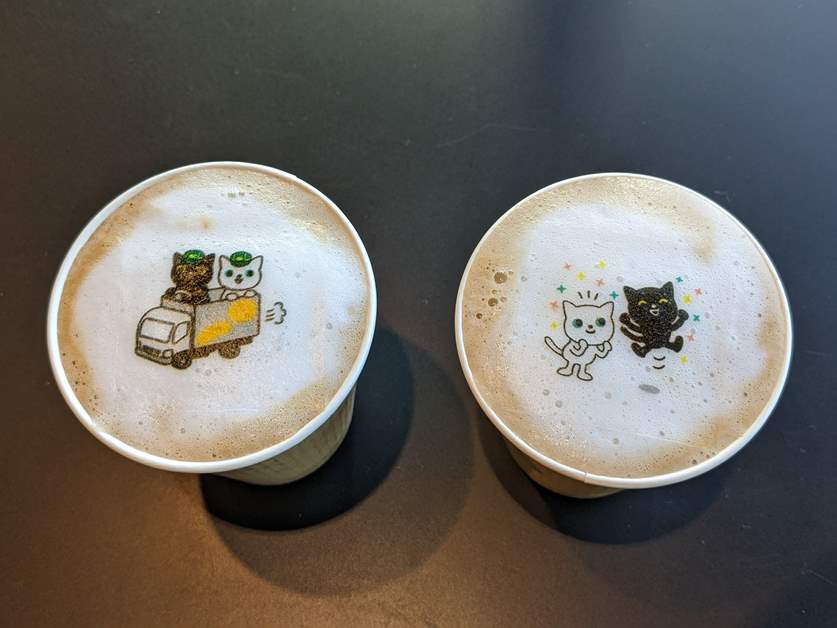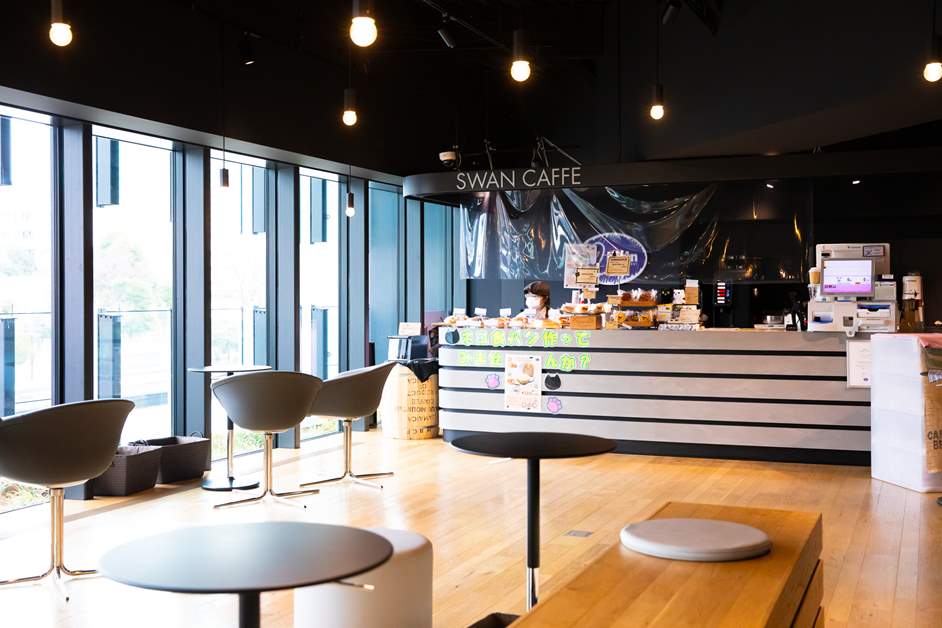【Video article】Tracing the History of the Company's 100-Year History! Adults can also enjoy a social studies tour at the Kuroneko Yamato Museum
The Yamato Group History Museum Kuroneko Yamato Museum, established to commemorate the 100th anniversary of the Yamato Group, opened on July 2, 2020. Located a 10-minute walk from Shinagawa Station, the museum features exhibits of materials and a hands-on corner where visitors can learn about the history of the Yamato Group. It also has a café where you can relax. We took a tour of the museum, which is fun for children and adults alike, as if we were on a social studies field trip.
After checking in at the open-air entrance, enter the museum.
The 10-story Yamato Konan Building, where the museum is located, was originally built on the site of a former Yamato Transport sales office (then the TA-Q-BIN Center). First, take the escalator to the entrance on the second floor where the reception desk is located. The glass-walled entrance gives a sense of openness and offers an excellent view. You can also see the Takahama Canal facing the building. Luggage can be left in lockers or at the reception desk, and strollers and wheelchairs are available for rent, so anyone can visit the museum with peace of mind. After filling in your name and phone number at the reception desk, you will receive an entrance pass and go to the gate!
When you pass through the gate, you will first be greeted by a model of the Yamato Konan Building. This building is actually a complex facility that also houses a Yamato Transport sales office. As you can clearly see from the model, the upper and lower parts of the museum's ramp are the lanes for collection and delivery vehicles, and the ramp and lanes are a double helix, an unusual structure. The museum is sometimes visited by architects and featured in architectural magazines.
During busy times such as weekends and holidays, there may be a wait time to enter the museum, so if you want to take your time and look around, we recommend weekdays when the museum is relatively empty. However, please note that the museum is closed on weekdays. Check the official website in advance. Also, since reservations are not required except for groups of 10 or more people and attendant tours, feel free to drop by at any time. Some people even stop by on their way to the museum on a walking tour.
The exhibition is about an hour long, starting on the 6th floor and going down.
Now, take the elevator to the 6th floor to start your tour. The Museum's route takes about one hour from the 6th floor down the ramp and back to the gate on the 2nd floor. If you take your time, it will take longer, so if you have a schedule, you will want to pay attention to your pace.
The exhibit begins with the "Founding Era," which includes a section on the founder, Yasuomi Ogura, whose history of the Yamato Group began in 1919 when the company was founded as a trucking company in Ginza. Projection mapping reproduced scenes of people passing through the streets of Ginza at that time.
Also of note are the truck models and the driver's uniforms. If you look carefully, you may spend quite a lot of time on this floor alone. ......
The exhibit provides visitors with a glimpse into the history of TA-Q-BIN before its birth, including the foresight of its founder and the origin of the company's name. In the circular theater, the 100-year history of the Yamato Group and a family is presented in a 10-minute animation. The large 14-meter wide screen is very powerful!
Next, we went to the "Yamato Express and the Era of Business Diversification" area. A wealth of documents and videos from that time make it easy to understand what kind of business the Yamato Group has been engaged in. As a general department store of transportation, they also transported mummies and Van Gogh's sunflowers.
The origin of the "parent-child black cat" symbol of the Yamato Group is also revealed! The cat mark was born out of a business alliance with a major U.S. land transportation company.
In the 1960s, the Yamato Group faced a pinch. It fell behind its peers in long-distance trucking and was left behind in social development. The space design expresses such an image of Yamato. The company's severe business conditions and the fact that it is hitting rock bottom are clearly conveyed in the space design.
After passing through the area with the impressive catch copy hanging from the ceiling, visitors will finally see the "Takkyubin" that everyone is familiar with. In the "Takkyubin Era" area, visitors can learn all about how Takkyubin saved the Yamato Group in a pinch.
Carefully unraveling the story of how the familiar TA-Q-BIN was born
Takkyubin for individuals was born in 1976 and became a big hit, but there were some hardships leading up to its birth. This area also introduces Masao Ogura, the second president and creator of Takkyubin. Yamato Transport's TA-Q-BIN, which was developed over the objections of those around it, was even featured in NHK's popular program "Project X: The Challengers. Looking at the exhibit, it sounds as if you can hear Miyuki Nakajima's theme song, "Stars on the Ground"?
Various delivery products and services are then created, such as Cool Takkyubin and Ski Takkyubin. Many of you may have used these services.
The transition of Yamato Transport sales driver uniforms is also on display. It is clear that while there is a solid concept, minor changes have been made in detail.
Information equipment and packaging materials from past generations are also on display, so parents and children may have a "nostalgic" time together.
At the TA-Q-BIN experience corner, visitors transformed into a Yamato Transport sales driver!
In addition, at the TA-Q-BIN Experience Corner, which is very popular among children, you can actually try on a Yamato Transport uniform and experience stacking packages. Using the images and panels as a guide, try neatly stacking packages of various shapes.
Visitors can actually experience riding in a walk-through car that was used to pick up and deliver packages. The walk-through vehicle, which was designed to facilitate safe and easy work, is one of the main attractions of the museum. You can feel like a Yamato Transport sales driver.
Toward the end of the exhibition, the "Era of New Value Creation" area introduces the Yamato Group's initiatives for the future. In the "Future Creation Lounge & Library," visitors can watch a video playing in the museum, read related books, and even draw their own "city of the future" and post it on the wall. It will be interesting to see what kind of future city others envision.
The fun social studies tour is over as we return to the second floor entrance where we started. Since we have come all this way, we would like to have something to commemorate the visit. At the reception desk, in addition to books related to the Yamato Group, you can also buy three-color ballpoint pens, A4 clear files, tote bags, and other items with original museum designs. The stylish design makes you want to buy all of them. ......
In addition, the Yamato Group's Swan Cafe Shinagawa Konan, which is located next door, sells Kuroneko Dorayaki (dorayaki with a cat logo) and other items. It's a bit of a waste to eat them, but the slowly cooked Hokkaido azuki bean paste wrapped in moist dough is already an exquisite treat! Enjoy it with a glass of café au lait with lots of milk and an illustration of Kuroneko Shironeko while gazing at the Takahama Canal. Swan Cafe Shinagawa Konan is one of the stores operated by Yamato Group's Swan Co. Swan Co., Ltd. produces and sells bread and operates cafes with the aim of supporting the independence and social participation of people with disabilities.
For more detailed information on the Yamato Group History Museum Kuroneko Yamato Museum, which we toured this time, and how to contact the museum, please refer to the official website below. The museum is said to attract a variety of visitors every day, from groups of students to families and couples, as they can enjoy learning about the history of TA-Q-BIN, which they use all the time. Why don't you take a walk once in a while and enjoy a social studies tour for adults?
《Yamato Group History Museum Kuroneko Yamato Museum》
https://www.yamato-hd.co.jp/museum/"
《Yamato Group History Museum Kuroneko Yamato Museum》
https://www.yamato-hd.co.jp/museum/"
Photo by Midori Shimamura




